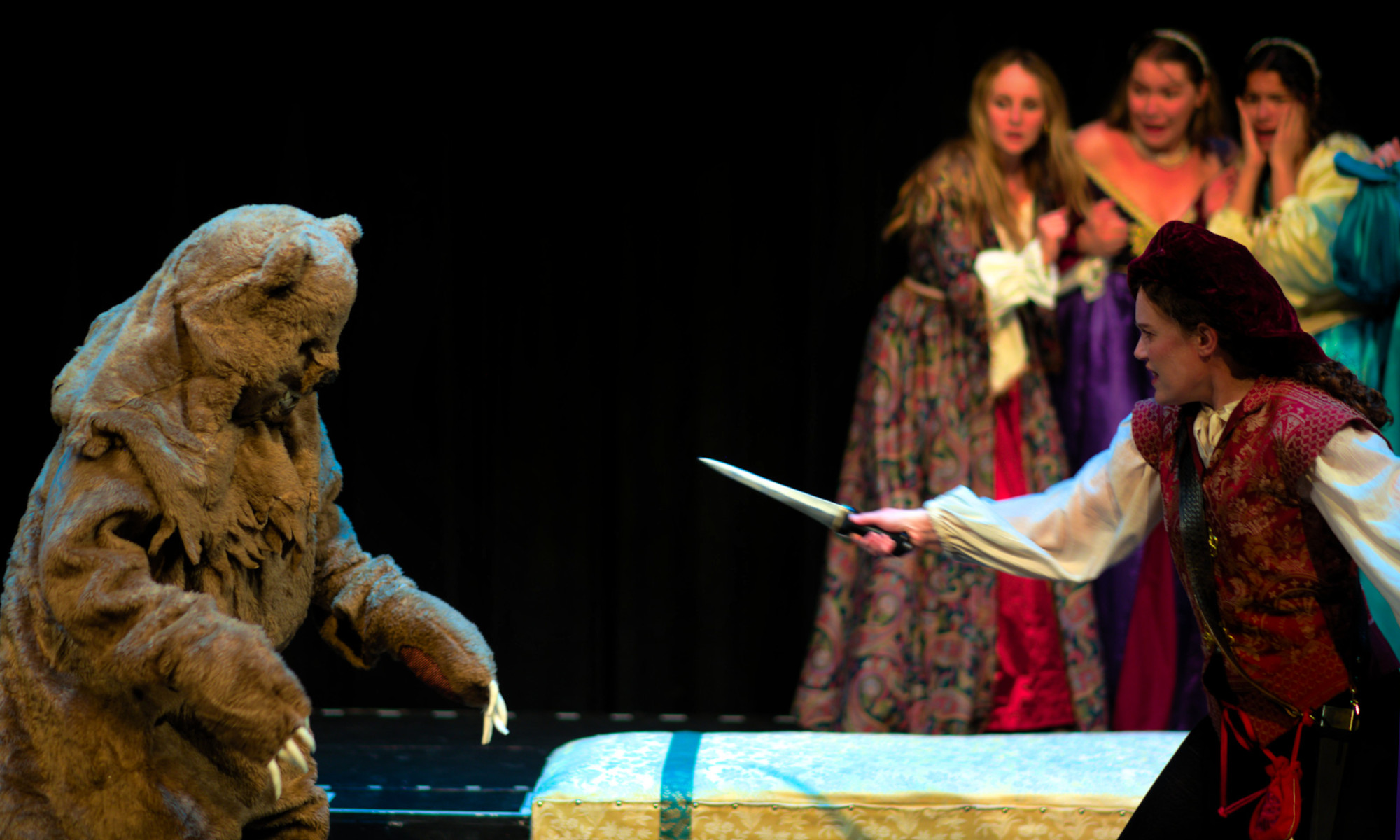We opened our seventeenth season, 1996-97, with David Mamet’s Glengarry Glen Ross. We followed with Tennessee Williams’s Cat on a Hot Tin Roof, Shaw’s Candida, Shakespeare’s Hamlet, and finally Synge’s Playboy of the Western World. The questions of how to mount, how to costume, were easy. Glengarry was written in 1983 and whatever changes may have occurred in men’s fashions over the last thirteen years seemed too trivial to bother with. The actors wore their own suits.

But Cat was written and takes place in the ’50s in a plantation home in Mississippi. The play is largely about sexual tensions: Brick, the male lead, is gay and closeted (not that anyone used that word in the 50s) but his wife Maggie is straight and unsatisfied. She is the cat on a hot tin roof. But the way people talked about sex, especially gay sex (if ever they did), was quite different between the ’50s and the ’90s. In the first act Maggie wears only a slip. That makes sense for a hot summer day in Mississippi in the ’50s, but I doubt any of our actresses even owned a slip in the ’90s. So we had to evoke the period.

Candida and Playboy both take place at the turn of the twentieth century; the Shaw in London, the Synge in western Ireland. Both are romantic comedies and the sexual language and tensions of the Vicwardian time, in London and in County Mayo are, of course, even more different than they would be at the turn of the 21st century. Obviously we had to recreate the setting and the costumes of the time and place.


The point is that the choice of setting and period for these plays was easy and automatic. But we also did Hamlet in that season and with that play, as always with Shakespeare, the choice is not easy. When does a Shakespearean play—any Shakespearean play—take place? Hamlet is based on a Scandinavian legend that Shakespeare read in a 13th century version written by the Danish historian Saxo Grammaticus. That places it in Viking times and that sorts with the politics in the play. England owes fealty to Denmark, and the Danish king can give orders to the English king. But Hamlet, Rosencrantz, and Guildenstern were recent students at the University of Wittenberg, which was founded in 1502. And when Hamlet and Laertes duel in the last scene of the play their weapons are specified: rapier and dagger. The rapier was invented in the early sixteenth century. And rapiers are mentioned and worn and used not only in plays that can be thought to take place in Shakespeare’s time, but also in the King Henry plays and even in Timon of Athens and Two Noble Kinsmen, plays that presumably take place in classical or mythical Athens.

The ruler of Athens in Kinsmen and in A Midsummer Night’s Dream is Theseus, the Duke of Athens, which is of course a great anachronism. Well, yes, there were dukes of Athens, but that was during the Crusades when a duchy of Athens existed for a while during the 13th and early 14th centuries. That is not what Shakespeare had in mind. In Antony and Cleopatra, Antony refers to a personal servant, basically a valet, of Caesar’s as “one who cuts his points.” Points were ties, ribbons, that attached a gentleman’s hose, his tights, to his doublet. And Cleopatra wears lace, which did not exist till some time in the middle ages. So we have a fair idea of how Shakespeare dressed his actors in that play.
 In 1594 or ’95, a schoolmaster named Henry Peacham made the drawing reproduced above, and, under it, transcribed some forty lines from Titus Andronicus. The sketch illustrates the moment in the first scene of the play when Tamora, Queen of the Goths, kneels before Titus, her conqueror, pleading for the lives of her sons. It is pretty clearly a drawing made either during or shortly after an actual performance of the play.
In 1594 or ’95, a schoolmaster named Henry Peacham made the drawing reproduced above, and, under it, transcribed some forty lines from Titus Andronicus. The sketch illustrates the moment in the first scene of the play when Tamora, Queen of the Goths, kneels before Titus, her conqueror, pleading for the lives of her sons. It is pretty clearly a drawing made either during or shortly after an actual performance of the play.

Titus, the two male (kneeling) Goths and Aaron the Moor are wearing Roman armor. Titus’ Roman soldiers however, are in Elizabethan doublet and hose. Tamara is dressed like a fashionable Elizabethan lady. Under their Roman armor the Goths and Titus wear hose: that is, tights. The anachronism in the weapons is just as striking. The Romans carry medieval ceremonial halberds. One sports a scimitar, an unlikely weapon for either a classical Roman or an Elizabethan English soldier. His companion and Aaron have medieval long swords. But twice in the play swords are called rapiers.
Finally, to complete the list of anachronisms, while the left-most soldier wears a contemporary armor, his companion has on a breastplate of a Saxon style that passed out of use a hundred years before the play was performed. This is one of the best evidences that the drawing is the record of an actual performance. It would be difficult to understand why the artist, simply illustrating a scene from a play he was reading, would draw an armor he would never see in use. But it is easy to understand why an actor might be wearing such an armor: the theatre owned it precisely because it was no longer serviceable for combat.

So, there is no default proper period for any Shakespearean play, and that is probably one reason producers today seem to delight in finding strange settings and periods for the plays. But it seems certain Shakespeare did not place any of his plays in his own time. So we costumed Hamlet in the Viking period with rapiers and a university in Wittenberg. The religion in the play is Catholicism; Hamlet’s father’s ghost resides in Purgatory and Laertes says his dead sister will be a ministering angel when the priest at her funeral will “lie howling.” Claudius’s prayer in Act III is certainly a Christian prayer. But Hamlet’s absolute need to avenge his father is not a Christian notion. But it is a Viking’s duty, and mixing the Christian prohibition with the pagan, Viking duty helps to define the great conflict in the character of Hamlet.

